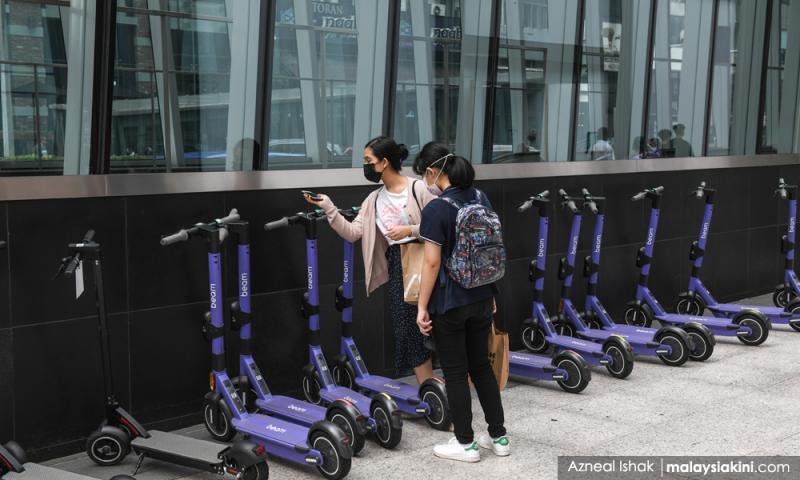LETTER | Syabas MBPJ for allowing e-scooters on the streets
LETTER | Electric scooters (e-scooters) are contentious wherever they are found. They could either be allowed on the streets or banned. On April 2, Parisians voted to ban them from being used in their city, with 89 percent of voters favouring the proposed ban and 11 percent opposed to it.
Following this, the contracts of three companies operating e-scooter rental services in Paris will not be renewed upon their expiry on Sept 1, 2023. Globally, however, the business of bicycle rental had gone bust while the popularity of e-scooters continues to surge in recent years.
Eight years ago, I was a panellist at the Land Public Transport Commission (SPAD) Land Public Transport Symposium 2015 and spoke during the session entitled “The First and Last Mile Connectivity: How Do We Make It Better?”.
Then, battery-powered personal mobility devices were still very much a novelty. I showed the audience pictures of an electric unicycle and hoverboard, which is similar to a skateboard but battery-powered that could move forward, reverse, or turn simply by leaning towards the direction, but many found it difficult to stay balanced on it and suffered bad falls.
The hoverboard is the most compact of such devices and could easily be carried on board a bus, train, or aircraft, but was later banned by airlines as the powerful batteries are fire hazards.
Later, e-scooters with a handle to steer and can only move forward became hugely popular. Back then, I called on the authorities to allow the public to use single- or double-wheeled battery-powered personal mobility devices on public roads to bridge the gap for first and last-mile connectivity to promote public transport use.
I also took the opportunity to propose the return of minibuses as part of the last-mile connectivity solution, especially to and from LRT, KTM, and MRT stations. These proposals were published under “Bring back minibus” by a daily on Nov 18, 2015.
Much water has flowed under the bridge but first and last-mile connectivity remains an issue, and this is not lost on the Petaling Jaya City Council (MBPJ). It is allowing a company that specialises in micro-mobility services to offer e-scooter rentals at selected locations in the city.
During the recent launch at Taman Jaya LRT station in Petaling Jaya, Bukit Gasing assemblyperson Rajiv Rishyakaran was reported to have said, “We want to facilitate movement from LRT and MRT stations to nearby commercial and residential areas.”
“It is hard for some people to get to their destinations from public transport hubs and it can be very expensive at times. Commuters will find it more convenient and affordable to get from one location to another with this service,” he added.
The situation is very much the same in many cities and urban centres across the country, with some choosing to ban e-scooters out of expediency instead of making efforts to control their usage for the safety of riders and other road users, particularly pedestrians.
Unlike normal vehicles using internal combustion engines that could be distinctly heard, the only sound produced by battery-powered cars, motorbikes, bicycles, and e-scooters is from the tyres which may not be audible or drowned out by other noises in the vicinity.
As a safety feature, all types of electric vehicles should emit a recognisable sound for the safety of others. If this is not incorporated in e-scooters for hire, then there should be a built-in horn for riders to warn people nearby, especially when passing pedestrians from behind.
If e-scooters can be safely used, they could be an added attraction for the destination. My teenage granddaughter, who lives in Australia with her parents, lists riding on an e-scooter in Penang as the highlight of her lengthy tour to Malaysia that covered many cities and towns.
The views expressed here are those of the author/contributor and do not necessarily represent the views of Malaysiakini.
RM12.50 / month
- Unlimited access to award-winning journalism
- Comment and share your opinions on all our articles
- Gift interesting stories to your friends
- Tax deductable
